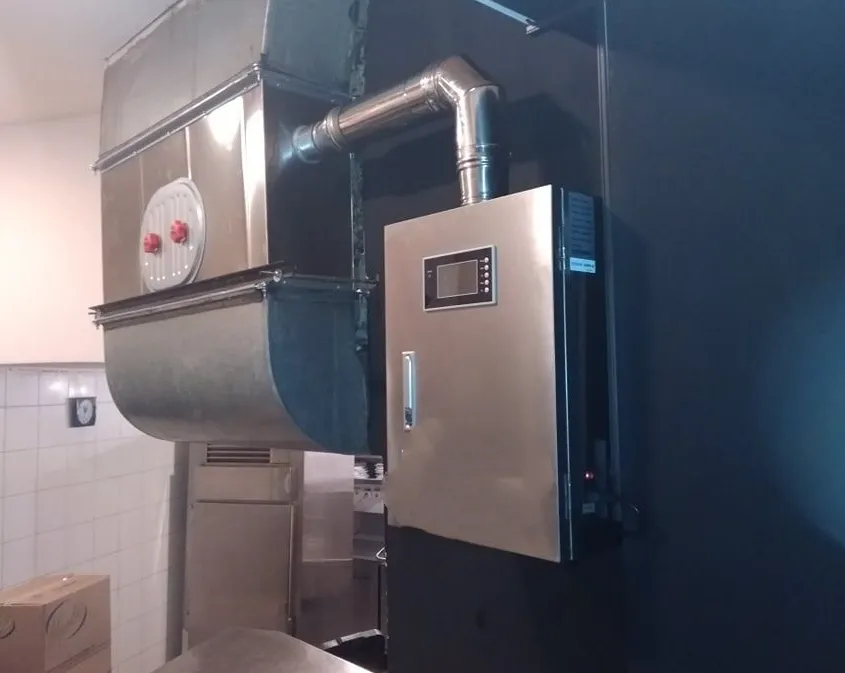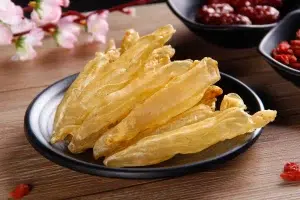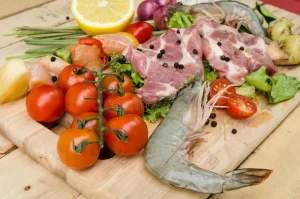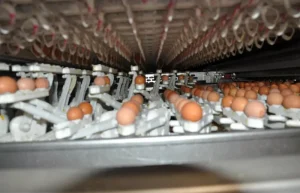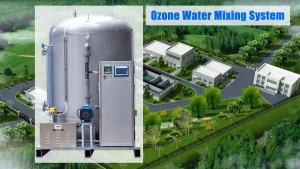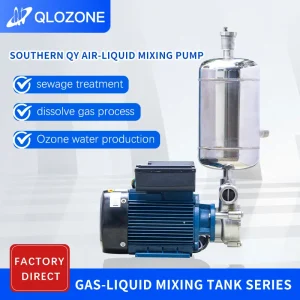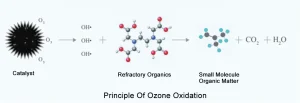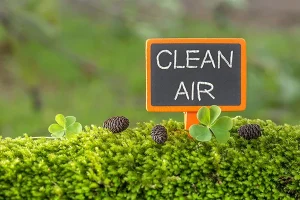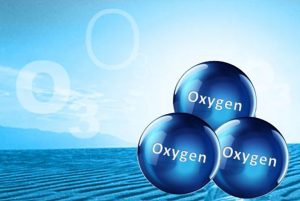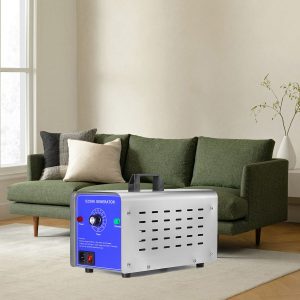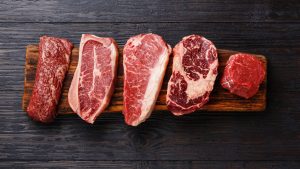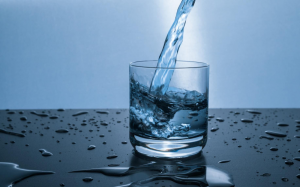Many pesticides are used in agriculture in China, and environmental pollution has constituted a social problem. Ozone has strong oxidation force and bactericidal effect, as a means to prevent drug damage and environmental pollution is being applied in various industries, such as facility horticulture (nutrient solution cultivation), seed seedling, preservation and other sterilization, in addition to low concentration of treatment to promote germination, growth is also more effective. Due to agriculture involves the complexity of various factors, the same is ozone, because of the different concentration and treatment methods, the effects on plants and life bodies also have completely different effects.
Ozone gas is used for plants in the facility
Ozone generator can effectively prevent and control tomato, melon, cucumber, frost mildew, gray mildew in the greenhouse, and can remove eggplant, mushrooms, potted flowers and other fungi and aphids, and promote the effect of growth. Small greenhouse only need to install one, in the passage above the pipe can reach very

Ozone water is used for drip irrigation in greenhouses
Ozone water drip irrigation can drive out algae in nutrient solution, and can also be used to kill nutrient solution diseases. Because of the root dipping cultivation, the concentration of more than 0.1 MG/L will be damaged, so the nutrient solution can be treated in the leisure period, or in the circulation way, that is, in the nutrient solution back-flow storage tank, the intermittent way of ozone injection sterilization.
Example: Single greenhouse, 350 square meters, both are 2 meters high. December-March use WS07 ozone machine, start on every 1-2 days, 60 minutes each time to the air purification, at the same time every 3 days to the water tank blowing ozone, 100 liters of water tank aeration for 20 minutes. Conditions of ozone-treated greenhouses:
Condition of experiment | Air ozone concentration:2-4 mg/cubic meter | Concentration of ozone in drip irrigation water:0.2-0.4 mg/L |
watermelon | Powdery mildew:the white powder formed on the leaf area shrinks,the color becomes lighter | The viral tissue is destroyed under the root,and the source of powdery mildew is suppressed |
tomato | Epidemic mold disease:turf and various spores stopped the flow | The black hair on the leaves and fruit shrinks and is shed,and the pathogenic bacteria no longer invade |
cucumber | Downy mildew:the back of the leaf purple gray mildew light | The curled leaves become unfolded,while the veins are clear and the gray leaves intact |
Ozone spray prevention and control of air infectious bacteria
Tomato varieties with weak leaf mildew resistance were selected, with 4 test areas for bacterial inoculation;
1>A corrected concentration of 0.3 mg/l after the spray
2> the pesticide spraying area with chlorothalonil pesticide diluted 700 times
3> The distilled water spray zone
4> No inoculation of the no-spray control area
Select 8 plants in each area in 5-7 main leaves, spray the leaves with the sprayer, and then calculate the incidence, as long as the leaves on the disease is the disease. Morbidity = (total number of diseased leaves / total leaves) * 100 (%). From the visual results, it can also be concluded that ozone zone is second only to pesticide area, which has its inhibitory effect:
experiment area | Processing content | morbidity(%) | symptom | |
1 | Bacteria inoculation,apply ozone water | 57.6 | There is no punctate necrosis not present in other areas | |
2 | Bacteria inoculation,pesticide application | 53.7 | No obvious disease spot production | |
3 | Bacteria were inoculated with distilled water | 68.6 | Large obvious disease spots | |
4 | No inoculation,no spray | 52.2 | Very few minor spots | |
Ozone is applied in intensive livestock farms
The air odor caused by a large number of feces in livestock farms, there are many low amines and sulfides in the malodorous substances, ozone can react with these substances, rapid oxidation, deodorization, and at the same time. And ozone water can be used to disinfect the surface of the site.
Advanced oxidation technology is applied in clean vegetable processing
According to the test, the use of ordinary household ozone machine in the water aeration, can achieve the ozone water concentration of 0.2-0.3mg/l, this concentration of ozone on various pesticides basically without any effect. France Buescher et al’s test showed that the ozone concentration of easy to remove organophosphorus pesticides, up to 5-10 mg/l for 10-15 minutes to have satisfactory removal, and for the organochlorine pesticide, in 20 mg/l ozone underwater 15 points also only 50% removal. As long as the concentration of 1-2 mg/l ozone water immersion will make fruits and vegetables bleach and seriously damage nutrition, ozone oxidation removal of pesticides can not achieve the effect. Rich water technology applies foreign cutting-edge advanced oxidation technology, through the catalytic odor oxidation process, the formation of free radicals with strong oxidation capacity in the water to strengthen the decomposition of residual pesticides, improve the oxidation capacity and reaction speed, at the same time, because the concentration of ozone water need not be very high and does not destroy the fruit and vegetable nutrients.
The application of ozone in agriculture
1.Vegetable disease prevention and control
The low quality ozone produced by greenhouse plant disease ozone control device can prevent all gas-borne diseases and most soil-borne diseases of fruit and vegetable crops such as cucumber, green pepper and eggplant in greenhouse. Ozone with low quality score can effectively prevent the occurrence of cucumber downy mildew, powdery mildew, anthrax, blight blight and mosaic virus, and also has a preventive effect on eggplant and bean gray mold. In addition to the significant control effect on diseases, ozone also has the control effect on some pests, such as the control rate of aphids reached 63%~68%.

2.Remove pesticide residues from vegetables
When eating vegetables, the most worrying problem is pesticide residues. The traditional methods to remove pesticide residues include: soaking water, alkaline water, peeling, storage, heating, etc. Dr. Pan Can ping of China Agricultural University pointed out that the traditional clean water soaking method can hardly remove the pesticide residues of fruits and vegetables, and the high concentration of ozone immersion can effectively remove the pesticide residues.
3.Vegetable preservation and processing —— cleaning and disinfection of vegetables
Using the oxidation and sterilization effect of ozone, the use of ozone-containing water to clean fruits and vegetables can not only effectively kill the pathogenic bacteria and corrupt bacteria attached to the surface of vegetables, but also remove other toxic substances remaining on the surface of vegetables. It is one of the ways to maintain and improve the safety of new vegetable foods.
4. Vegetables fresh processing —— fresh cut vegetables
Ozone has a good killing effect on the microorganisms on the surface of vegetables, and its oxidation can damage the wound ethylene produced by fruits and vegetables, which has an ideal effect on delaying the ripening of vegetables and maintaining the fresh quality of vegetables
5.Vegetable preservation and processing —— Vegetable storage
Vegetables are still a living organism after harvesting, and respiration is one of the most important physiological activities of vegetables after harvesting. By inhibiting breathing, you can prolong the freshness of vegetables. Many experiments have shown that ozone can significantly inhibit its respiration in the storage of vegetables. The principle of its effect is that vegetables easily release ethylene during storage, and ozone can be to remove ethylene, thus slowing down the metabolism of fruits and vegetables. In addition, ozone can also destroy the dirty smell of organic matter or inorganic matter, with the role of deodorant and air purification, so it can be used for the disinfection of vegetable storage environment and maintain the environment conducive to the maintenance of vegetable vitality.
6.Vegetable preservation processing —— salted vegetable desalination
Vegetable peak season is easy to eat over, the off-season is not enough to eat. People usually make some vegetables into pickles and salted vegetables. For example, pickled vegetables, snow vegetables, radish and so on are the main pickled vegetables. When pickling processing, 8%~15%, or even higher concentration of salt is generally used, resulting in too salty taste to be eaten directly, and even salt poisoning may occur. Therefore, salted vegetables need to be eaten after desalination. The traditional desalination method adopts tap water immersion, and microorganisms multiply after desalination, especially in summer, easy to appear long film, raw flowers, soft and other phenomena. Ozone has the characteristics of killing a variety of microorganisms. Studies have shown that the number of microorganisms in the salted vegetables has decreased significantly compared with the salted vegetables soaked in tap water.
Ozone water to disinfect the fruits & vegetables:
1). Improve Taste and Appearance – There is evidence showing ozone improves taste and appearance of fresh salad for the RTE market while controlling food borne pathogens.
2). Greater Shelf Life – Reduced counts of bacteria which lead to food spoilage increases shelf life and shipping distances.
3). Reduce Pesticide and other Chemical Residuals on Food – The chemical oxidizing action of ozone can breakdown toxic chemicals such as pesticides on food making them biodegradable.


